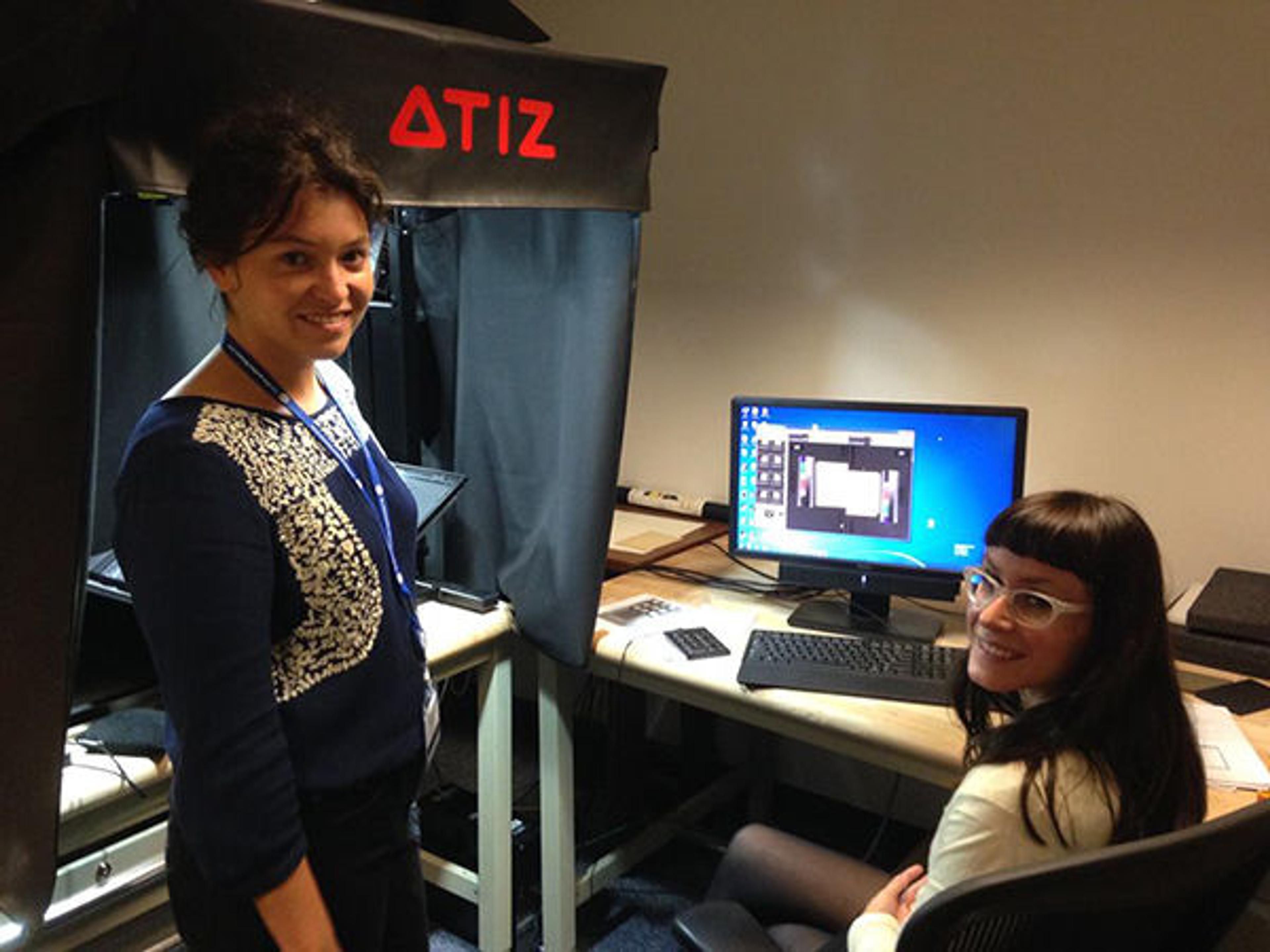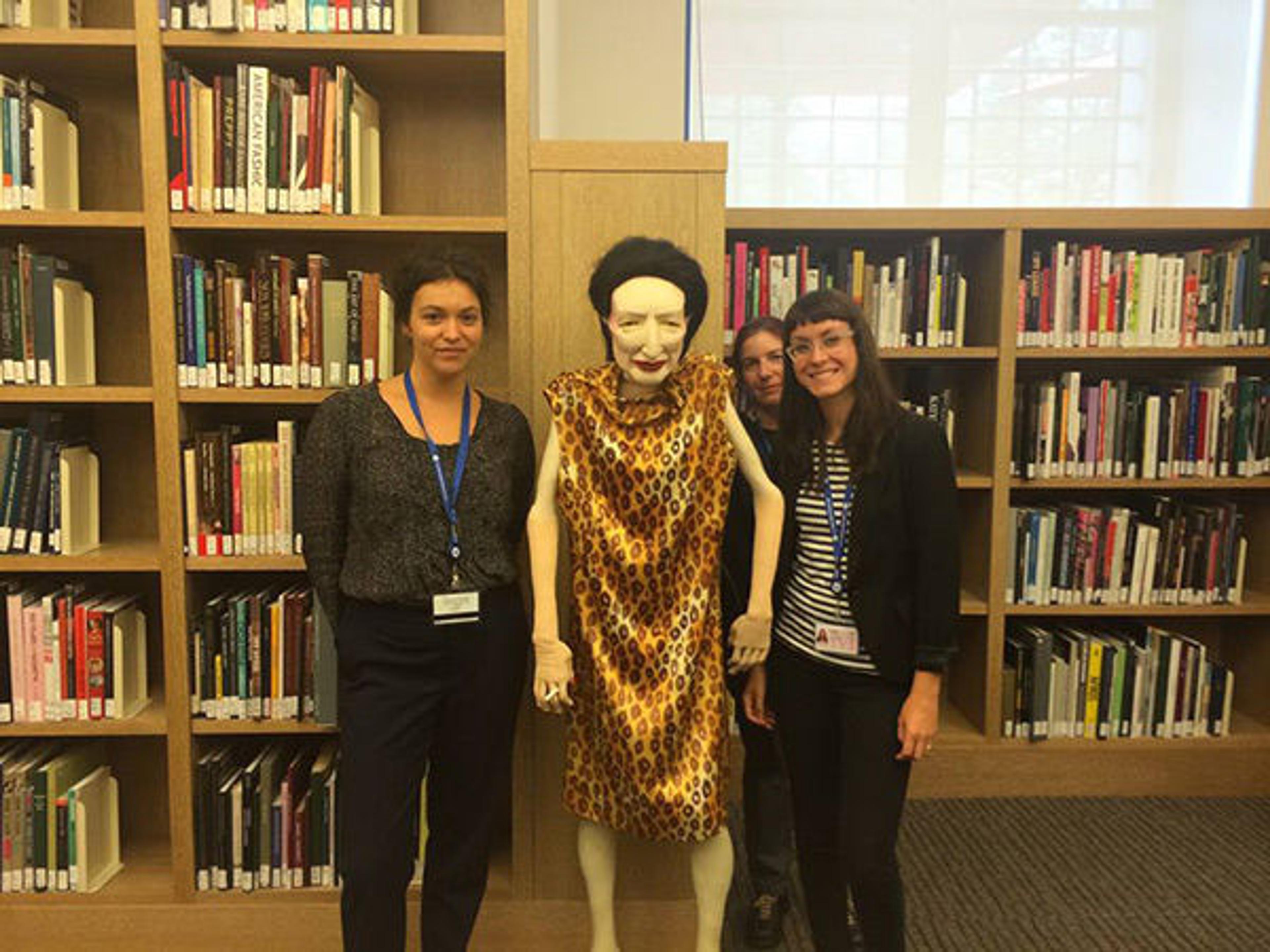Art Libraries 101: Or, My Life as an Intern

From left: Interns Freya Yost, Lauren Allshouse, and Jodi Shapiro pose on the Met's rooftop garden
«Last spring I received an academic scholarship to complete a one-year internship at The Metropolitan Museum of Art's Thomas J. Watson Library. The internship was designed as a guided, hands-on learning experience for students of library science interested in a career in art librarianship. Since I am currently finishing up a two-year master's program in Information and Library Science at Pratt Institute and am especially interested in art libraries and visual resources, interning at Watson Library has been ideal.»
The first semester of my internship involved revolving work across the areas of cataloging, processing, serials, receiving, light reference, acquisitions, circulation, digitization, and preservation. Though I was familiar with most of the tasks in an abstract sense, putting them into practice took on new meaning for me. My mornings were usually spent in technical services, editing catalog records and processing gifts and new acquisitions. There is a lot of work that goes into processing a library item, and one of my favorite parts of the internship has been learning the life cycle of acquisitions—from selecting and purchasing the books, to receiving, processing, and ultimately placing them on the shelves for readers.

Freya Yost and Lauren Allshouse at work with our Atiz scanner
Books, catalogs, and other materials arrive in the mail room daily, from all around the world. Just last year over twenty thousand books were added to the Museum's collection. One of my jobs is to check-in the "shelf-ready" books. Shelf-ready books arrive (almost) ready to go on the shelf. They are sent from vendors or publishers who, in partnership with the library, have established workflows that make processing new materials more efficient. The books arrive with bar codes (to help locate each item), call numbers (to position them in the stacks with similar materials), property stamps, spine labels, security devices, and usually a basic catalog record. Of course, not all books come shelf-ready, but a significant number do, and it's fascinating to see the range of subjects, languages, mediums, art forms, and genres that go into supporting the scholarship of the Museum.
I also spend an hour every week at the Registration Desk. My time there includes registering new patrons, giving orientation tours of the library, and explaining the many services that are provided. In addition to print resources, Watson Library subscribes to a number of electronic databases. It has been fun learning my way around these digital resources and assisting readers in their use. The scope and variety of content is noteworthy: auction sale results, provenance information, image databases, maps and geography, art encyclopedias, indexes, digital collections, and more.
During our second semester, interns focus in a specific area related to their interests and the needs of the library. I have been working on a digitization project that Watson Library is doing in partnership with the Internet Archive. In brief, Watson is sending thousands of auction catalogs to the Internet Archive for scanning and eventual hosting online, where they are freely available to anyone with an Internet connection. It has been fascinating to learn the many steps and years of planning that go into a project like this.

Freya Yost, Lauren Allshouse, and Jodi Shapiro pose with a Diana Vreeland doll in the Irene Lewisohn Costume Institute Library
I am proud to be one of the first participants in a new internship program established between Watson Library and Pratt Institute's Information and Library Science School. The internship has and continues to be an incredibly rewarding and educational experience. The knowledge and excitement of the librarians here is astounding. As resources are increasingly available in digital format—either digitized from their print versions or born as digital assets—libraries are leading scholarship in new and innovative ways, and this is especially evident at Watson. The reading room is buzzing (albeit quietly) with Museum staff, professors, scholars of all kinds, artists, students, and aspiring librarians like me who come to use the library's vast collection of nearly one million volumes and a wide variety of electronic resources.
I am very grateful for the opportunity to work with Watson's accomplished staff—including language and subject specialists, skilled reference librarians, and experts in metadata, systems, and cataloging—and am looking forward to my last couple of months, prepared to take away all that I can from this experience.
Freya Yost
Freya Yost is an intern in the Thomas J. Watson Library.